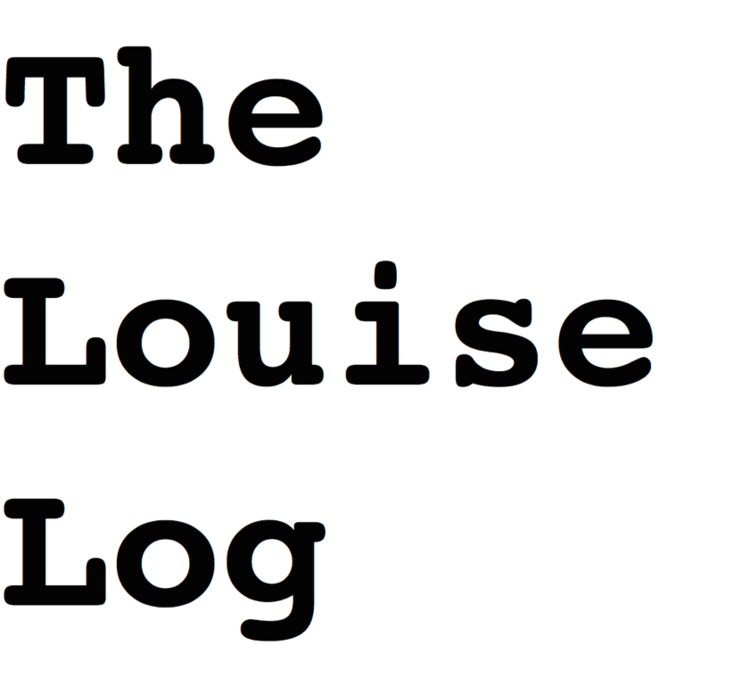I went into high gear designing and having a poster made up to plaster downtown New York. The poster came back not looking anything like a movie poster but I figured that by getting a strip to paste over the top and another strip with all the credits to paste over the bottom, we could salvage it. And in spite of the cat and Frank and glue all over everything, a handful of our old crew and I hand-pasted headers and footers and made up a gorgeous black and white poster.
On the day of the press screening, I got a call from the Anthology. Vincent Canby was in the hospital. He wouldn’t be at the press screening.
The next morning, on the day of our opening at Anthology, I heard NPR’s Neil Rosen give HTBL a very positive review live on WNYC and rushed out to get the papers. The New York Post had given us three stars and called it “very sexy”. After reading the first few lines of the review in The Times, I called Lea Floden who had starred as Louise, and shouted them at her into the phone: “A Judy Holliday character who seems to have fallen into a Jean-Luc Godard film.” Lea, in Los Angeles, had already read the review and told me to take a deep breath.
Caryn James, who had reviewed it for The Times, was not a fan. In fact, her ‘review’ seemed to veer into personal attack territory. “Anne Flournoy, who wrote, directed and produced this low budget film ... sometimes pulls back to suggest an arch superiority … “How To Be Louise” quickly becomes a low-energy exercise in directorial attitude…” Ow ow owww.
The New Yorker Films deal was contingent on a good review in The Times. Our hopes for distribution, which only five minutes before had seemed well-founded, were suddenly bleak.
The audiences at the nightly screenings at The Anthology grew over the month but they never filled the house. The review in The Times put a pall over everything.
My artist energy and whatever free time I had went into writing the script for ‘the next film’. Mostly I was focused on all that goes into keeping a family clean and fed and the job of raising two children. Telling other mothers at the playground that I was a filmmaker began to feel like a fiction from another lifetime. Time after time, I wrote and rewrote my script with notes from producers, with notes from friends. On good days I was certain that all this would come to something. On the many bad days, I swallowed the bitter pill that my life as a filmmaker was over.
Seventeen years later, in a summer of desperation, The Louise Log sprouted out of my experiences of marriage and motherhood and my fear that if I didn't set some deadlines for myself, I'd never finish anything again. I'd make one video a month. Six months later I 'finished' the first one. It was supposed to be a one-off thigh slapper and it was anything but. It was dark. It was a meditation on mortality and wasted time. Armed with some self-knowledge at this point, I realized I could spend the next seventeen years bringing it up to my standards. I uploaded it to YouTube on the last day of the month which happened to be the last day of the year. People in my address book wrote that they loved the actor (Christine Cook) and asked for another one with her. Thrilled at the response, I did one video a month for four months in a row. But I was running out of ideas as everything I had was in that script of so many rewrites. With Bob Berney and Mr. Green's encouragement, I decided to shoot and throw this enormous effort up on YouTube for free. It became the basis for episodes 5-17 of The Louise Log.
In 2013, The Sundance Institute launched How To Be Louise online and to celebrate that, we had a screening at Indiescreen in Williamsburg.
And that's my whole, never-before-told, story.
What did I learn from all of this?
I leaned the importance of working on what I love and with people I respect. That way, regardless of artistic or commercial success or failure, I’ll have used whatever (days, years) it takes, feeding my soul.
And I learned that 'failure' is not necessarily all bad. In the clear light of twenty-five years later, I think this ‘failure’ may actually have been my lucky break. With my tendency toward maniac workaholism, if I’d had the option of a career when my children were small, it’s possible that I might have managed to avoid the life-changing experience of that surrender historically demanded of mothers. Had I been busy as a bee with my big career, I doubt that being completely broken by the loneliness, the drudgery and the exhaustion of motherhood would have been anywhere on my agenda. In avoiding that, I might have also missed out on the great love of my life, of and for my family.





